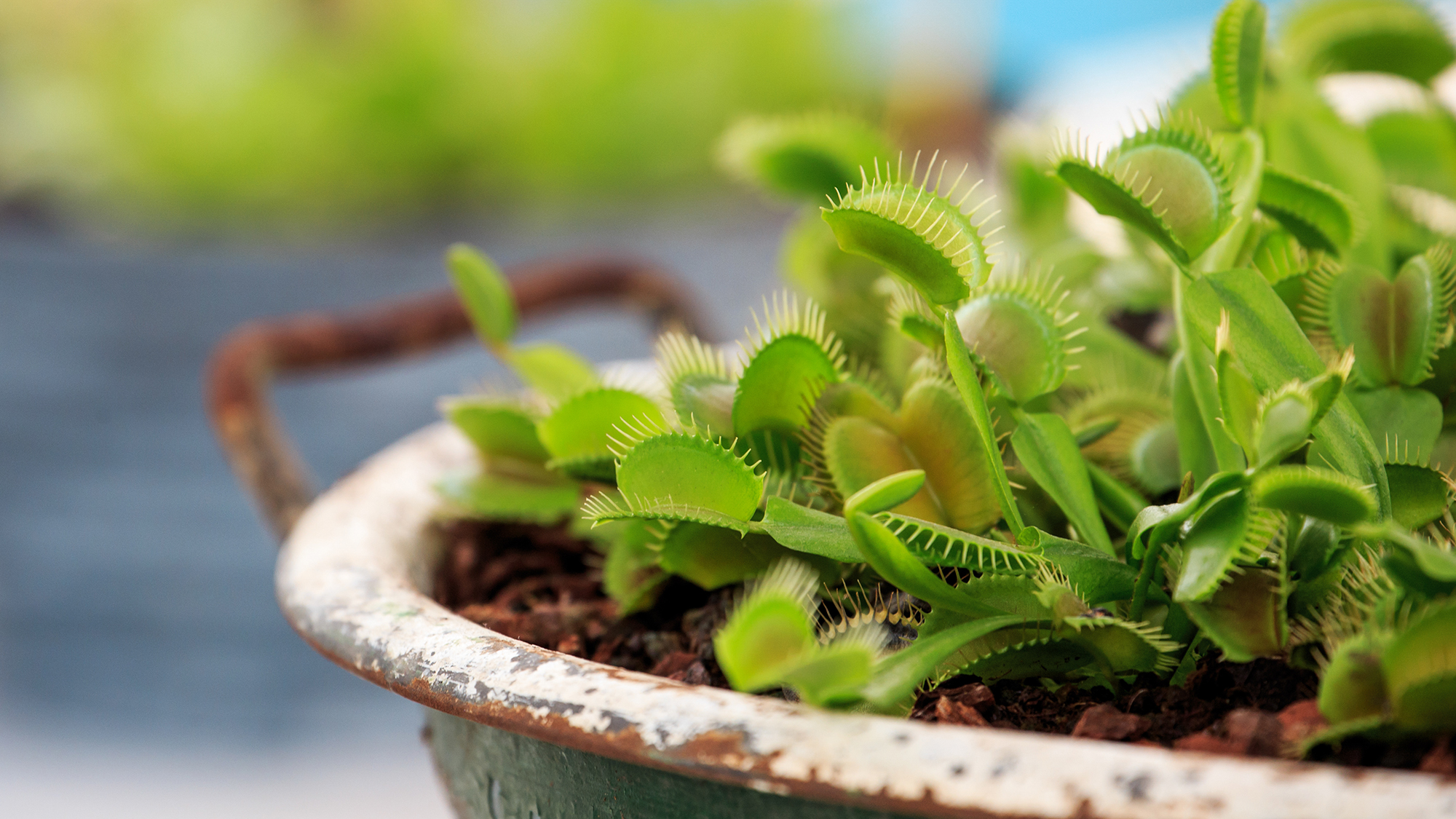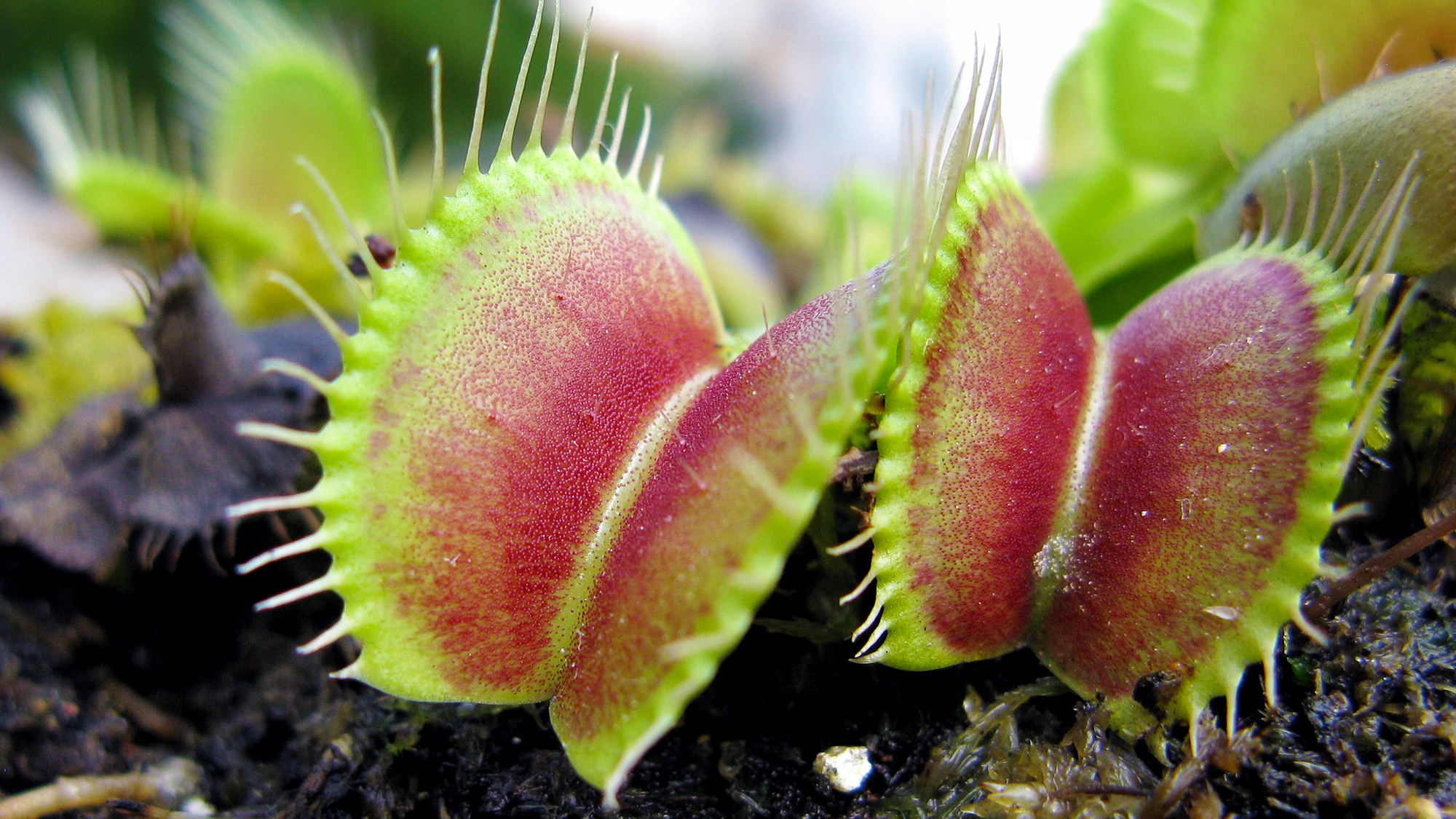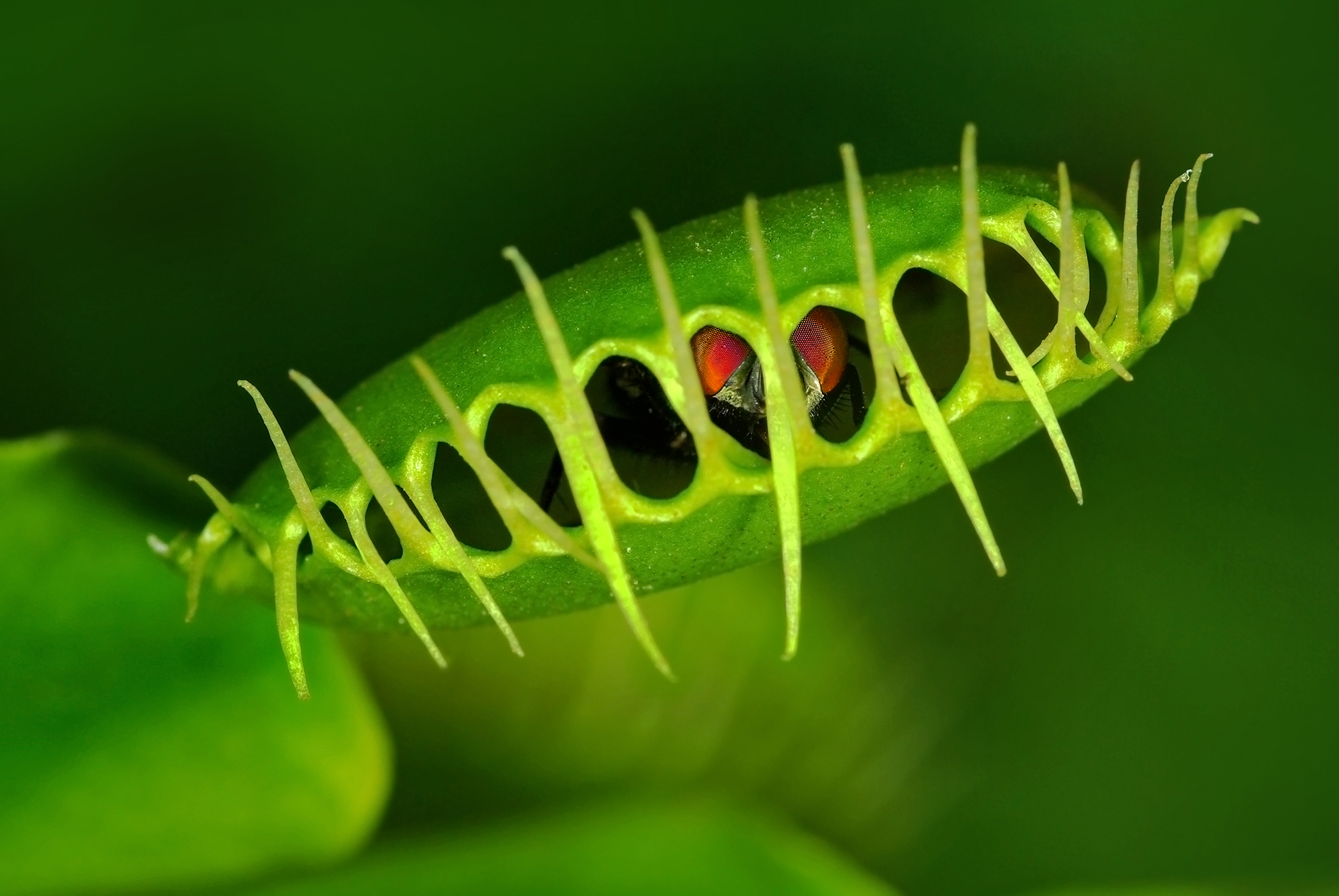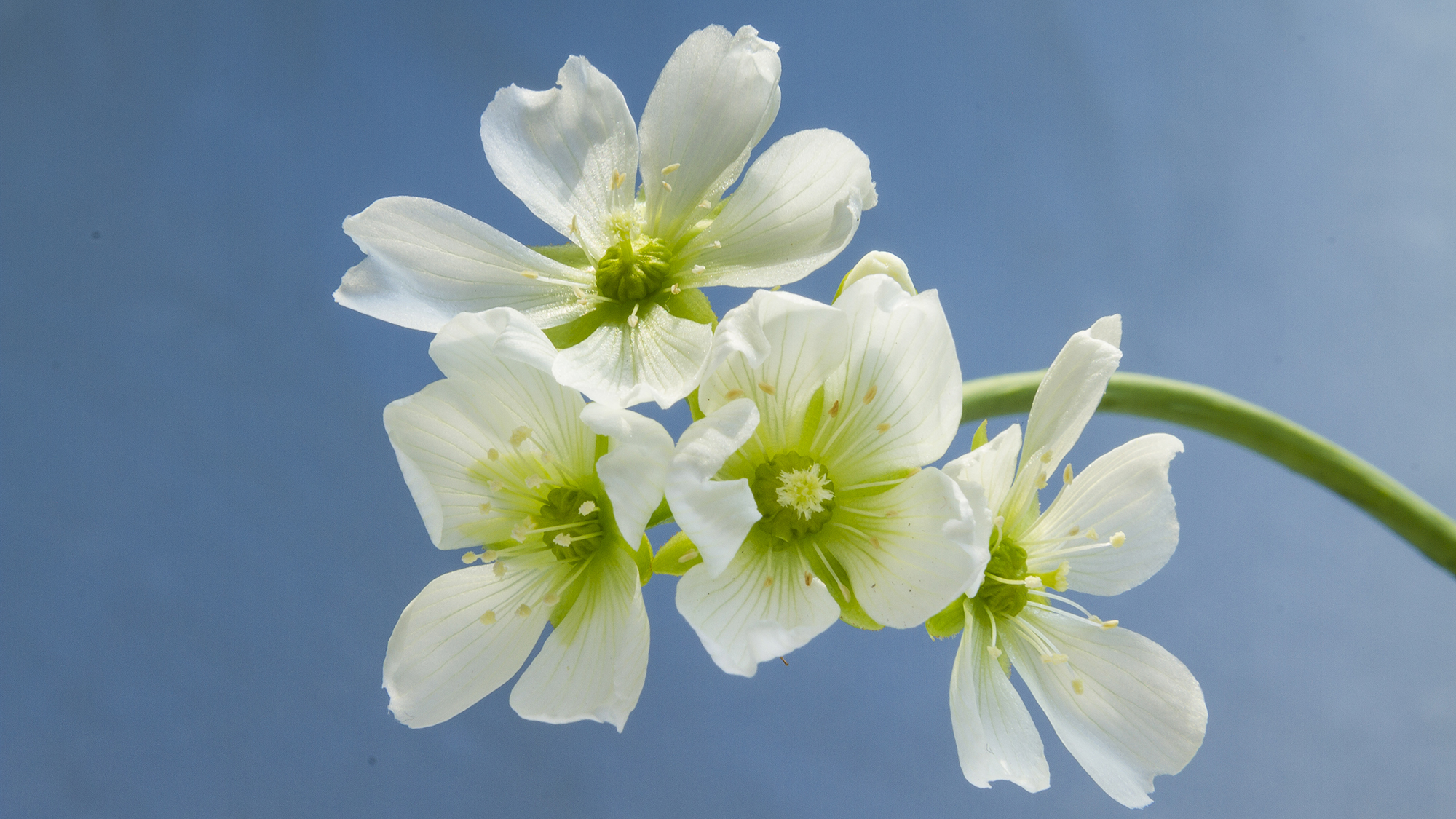How to care for a Venus flytrap – to keep it thriving
Discover how to care for a Venus flytrap – the plant world's most fascinating predator


It's vital to know how to care for a Venus flytrap properly to ensure this exotic-looking plant flourishes and helps you to keep on top of bugs.
As carnivores passively preying on insects, Venus flytraps are fascinating to watch in action. This makes them one of the best houseplants for curious growers, and a fantastic educational tool for children.
Their traps are triggered by movement, causing them to clamp down on insects and seal them inside to face their inevitable fate. Amazingly, the plants are clever enough to know the difference between live prey and a false alarm, and the traps will reopen if they suspect they have been fooled.
Native to North and South Carolina, Venus flytraps can be grown outdoors in USDA hardiness zones 7-11, so if you live in cooler climes you will need to take extra precautions to overwinter them, or grow them as houseplants.
‘Venus flytraps can be tricky to grow, and many people struggle with keeping them alive, especially indoors,’ says Amy Andrychowicz, houseplant and gardening expert, author, and founder of Get Busy Gardening.
‘However, once you understand how to properly care for them, it will be easy to enjoy this carnivorous plant for many years to come.’
How to care for a Venus flytrap – expert guide
Good Venus flytrap care will be a lot easier if you choose a variety that is suited to the conditions you can provide in your home or garden.
‘Each Venus flytrap has its own species-specific temperature, humidity, and sunlight requirements. With this in mind, it’s best to do your research and source a variety that will do well in the area you live,’ says Brody Hall, experienced horticulturist, conservationist and co-founder of The Indoor Nursery.
‘For best results, talk to local growers; they will point you in the right direction.’

How much light do Venus flytraps need?
The most important aspect of learning how to care for a Venus flytrap is ensuring it has enough light to thrive on.
‘If grown outdoors, the plants need full sun,’ says Andrychowicz. ‘Indoors, place them next to a sunny window or use a grow light.’ These are available to purchase inexpensively through Amazon.
To ensure an indoor Venus flytrap gets enough light, consider giving it some time outdoors in the warmer months. ‘Put them outside during the summer, then overwinter them in a cloche or terrarium indoors,’ adds Andrychowicz.
Venus flytrap temperature requirements
Venus flytraps have different temperature requirements between summer and winter, which is when they enter their dormant phase.
‘A temperature of 75-95°F (24-35°C) is ideal for the summer months,' says Andrychowicz.
‘However, the plants require a three to four month dormant period during the winter. Keep temperatures between 35-70°F (2-21°C), and give them bright, natural light only.’
Watering Venus flytraps
Watering is a key part of knowing how to care for a Venus flytrap as they appreciate a lot of moisture and humidity. It’s important to not let the soil dry out.
‘As Venus flytraps are native to the subtropical wetlands of North and South Carolina, many varieties – like some Drosera and Sarracenias species – enjoy being kept in mineral-free standing water,’ says Hall.
‘Other varieties and hybrids don’t require being placed directly in water, but will enjoy the humidity generated from a mister spray every two to four days.’
Avoid using tap water to irrigate your Venus flytrap, as it can result in a build-up of harmful minerals – rainwater or distilled water is ideal.
Water the plants every day if the air is dry, otherwise do so when the top layer of growing medium feels slightly dry to the touch.
‘It’s easiest to grow Venus flytraps in a container that always has standing water in the bottom, like a shallow tray, or a bog or water garden,’ adds Andrychowicz.
‘Give them enough water to completely wet the medium, or to refill the bottom of the container.’
In the winter, Venus flytraps require less water, but you will still need to keep the soil slightly moist.

Feeding Venus flytraps
While most plants rely on sourcing nutrients through their roots, Venus flytraps need to be fed through their traps, and use digestive enzymes to break down their food.
‘Never feed Venus flytraps with fertilizers. The insects they consume will be sufficient,’ says Hall.
If your plant is kept outdoors, then it should be able to catch enough of its own food naturally; however, if kept as a houseplant, then you will likely need to feed it every week or two.
The good news is that they don’t need much, and you only need to feed one of the traps at a time. Missing the odd feed won’t do any harm.
‘Feed them bugs only (dead or alive); do not feed them meat or anything else that is unnatural to them. Dried mealworms or crickets are great choices,’ says Andrychowicz.
When feeding Venus flytraps, it’s important to understand how their digestion works: once the hairs inside a trap are triggered by a brief period of movement, it will snap shut.
However, to minimize energy loss and ensure it has captured live prey, the trap will only start the digestion process where it feels continued movement. Otherwise, it will reopen and not take in any nutrients.
This means you need to trick the plant into thinking its food is still alive, which is perhaps the most gruesome aspect of learning how to care for a Venus flytrap – though fascinating.
The International Carnivorous Plant Society offers a helpful step-by-step guide to feeding dried bloodworms to the plants.
To ensure the traps are able to extract the nutrients, it advises rehydrating the protein-rich worms before placing them inside.
It’s important that the food doesn’t take up more than one third of each trap, otherwise it will die off after the digestion. The same trap can be used repeatedly to feed the plant for several weeks.
To trigger the trap’s snap mechanism, gently use a toothpick to disturb the hairs. This will cause it to close around the food. But it won’t yet have formed a tight seal. To encourage this, take a pair of tweezers and gently squeeze around the trap, to help it close more tightly.
Alternatively, you can gently massage the exterior of the trap with your fingers, but be careful not to damage it. Wait 30-60 minutes and repeat.
At this stage, the trap should have formed a tight seal; if it reopens within 24 hours, it didn’t work and you will need to repeat the process. The plant should take around a week to digest its meal.
While it might be tempting to test out the traps, you should avoid triggering them when they are empty. ‘The Venus flytrap does not like to be teased,’ warns Alyson Mowat, author of Terrariums & Kokedama. ‘Excessively springing the trap will eventually kill Venus.’
Repotting Venus flytraps
‘Venus flytraps grow best when they are repotted annually,’ says Andrychowicz. ‘The best time to repot them is in the spring right after their winter dormancy.’
Use a container that’s only 1-2 inches larger than the original, and fill it with fresh, pre-moistened growing medium.
‘Venus flytraps enjoy low-nutrient soils. Most plants will do well in a long-fibered sphagnum moss or a mix of perlite and peat moss,’ says Hall.
Plant the rootball at the same depth that it was in the original pot, taking care to completely cover the top of the bulb.
Water well to allow the medium to settle, and to moisten the roots.
Pruning Venus flytraps
Pruning isn’t an essential part of Venus flytrap care, but it will help to keep them healthy and looking tidy.
‘Prune away all of the dead growth in spring or early summer after they’ve fully come out of their winter dormancy,’ says Andrychowicz. ‘Cut any dead or dying leaves or traps down to the base.’
Additionally, Hall notes that neglecting to remove old growth can potentially cause issues. ‘Dead foliage can attract fungal infections, so it’s best to remove dieback as soon as it becomes a dark brown or black color,’ he says.
In the spring, mature Venus flytraps may produce attractive flowers. However, they are draining on the plant, so once the stems have reached around 2 inches, it is best to remove them.

How do I keep my Venus flytrap alive in the winter?
Venus flytraps enter a state of dormancy during the winter period, so you’ll need to adjust your care regime.
‘During the winter, keep your Venus flytrap in a cool location where the temperature stays between 35-70°F (2-21°C). The natural sunlight shift and cooler temperatures will help to trigger dormancy,’ says Andrychowicz.
‘A garage or basement would be a great spot, as long as you can place them in a window where they will get bright, natural light.’
Continue to keep the growing medium damp during dormancy, and take care to never let them dry out.
‘Don’t be alarmed if some leaves turn brown throughout winter,’ adds Hall. ‘Halt their feeding and continue to keep their soil moist. Just don’t expose them to harsh outside temperatures as they are very susceptible to freeze damage.’
Sign up to the Homes & Gardens newsletter
Design expertise in your inbox – from inspiring decorating ideas and beautiful celebrity homes to practical gardening advice and shopping round-ups.

Melanie has worked in homes and gardens media for two decades. Having previously served as Editor on Period Living magazine, and worked on Homes & Gardens, Gardening Etc, Real Homes, and Homebuilding & Renovating, she is now focusing on her passion for gardening as a Senior Editor at Gardening Know How. As a keen home grower, Melanie has experimented with pretty much every type of vegetable at some point – with mixed results. Often it is the simplest things that elude you, which may explain why she just can't seem to master zucchinis.
-
 Drew Barrymore's striped sofa is her most elegant design to date – it oozes East Hampton elegance in time for summer 2025 (and is under $384)
Drew Barrymore's striped sofa is her most elegant design to date – it oozes East Hampton elegance in time for summer 2025 (and is under $384)This subtly striped linen sofa anchors any living room while feeling light and casual – it looks so much more expensive than its price tag
By Megan Slack
-
 Bryce Dallas Howard's bedroom is the most creative, social space in her entire home – she uses 'conversational seating' to create a multifunctional 'salon'
Bryce Dallas Howard's bedroom is the most creative, social space in her entire home – she uses 'conversational seating' to create a multifunctional 'salon'The actress's bedroom doubles as a home office thanks to its clever layout and furnishings, proving that this area is much more than a sleep space
By Hannah Ziegler